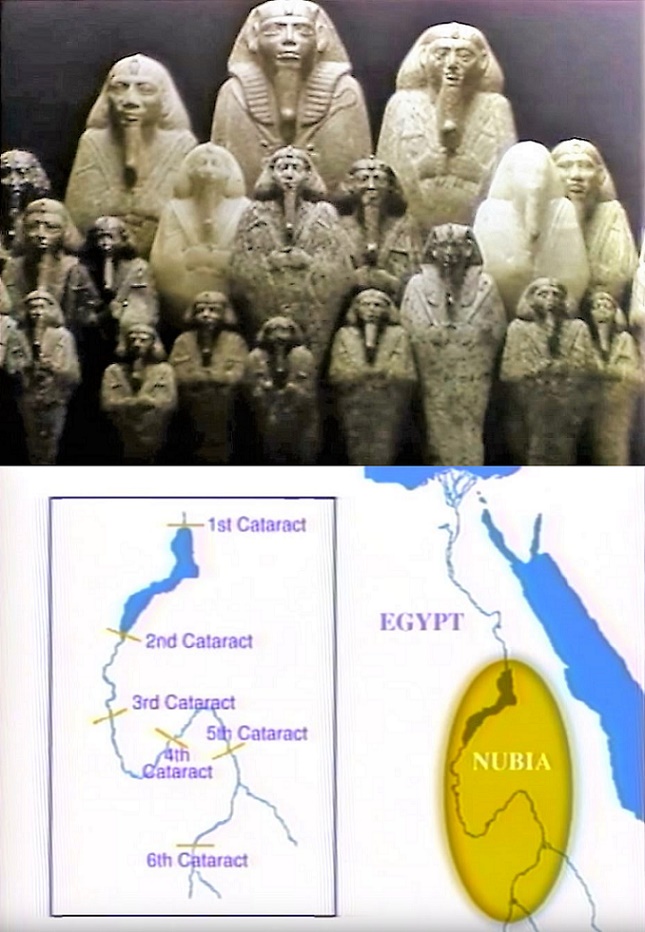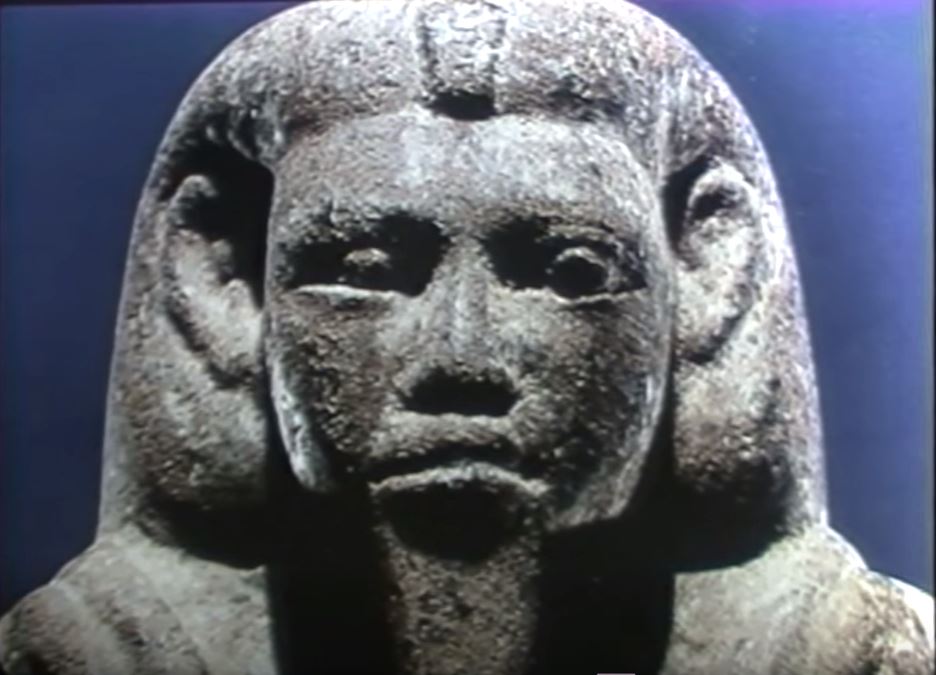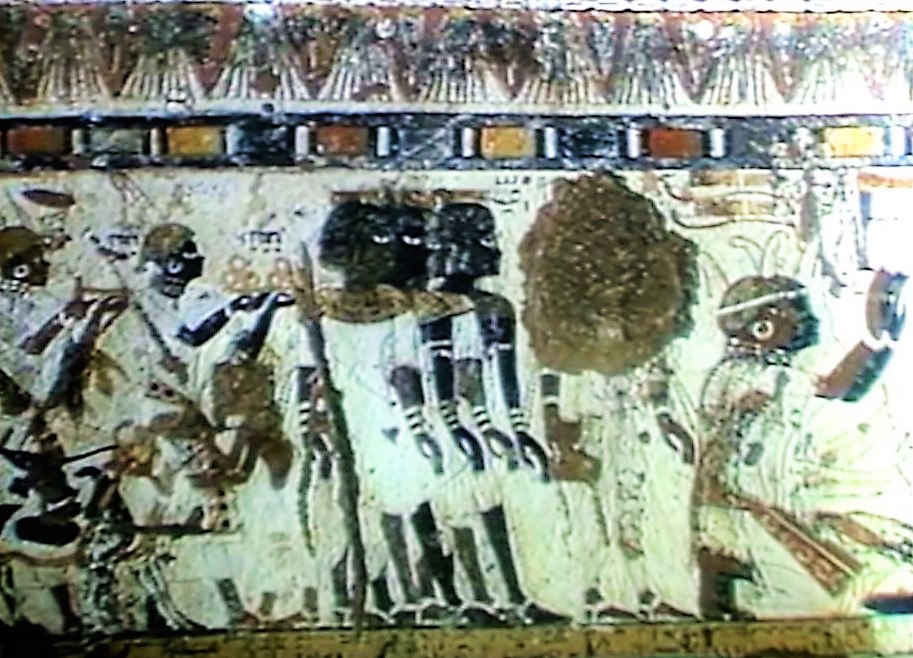For centuries the extraordinary monumental achievements of ancient Egypt have dominated the history of African civilizations in the public mind. It is not until the last 60 years or so that research and excavation has gradually revealed to us the extent and power of the great kingdoms of ancient Nubia.
Produced by Penn Museum, Penn Museum Education Department, and Annenberg TV.

Narrated by David O’Connor, Egyptian Section Senior Curator. Technical Producer Ellen Reynolds, Graphics Ron Schindlinger, Written and Directed by Michael Wakely.

Funded by Pew Charitable Trusts and NEH
Egypt’s rival in Africa, although there are still mysteries to be solved about the Nubian cities of kerma, Nepata and Marawis. We do know that Egypt and Nubia historically and politically intertwined while Nubia was a time strongly under the influence of Egyptian culture.

This production was likely shown in the gallery of the exhibit of the same title.

There is a mix of live footage taken in modern Sudan and Egypt, maps of the region and delineation of ancient Nubian areas, and footage and stills of ancient artifacts, murals and architecture.

The program gives an overview of the history of Nubia and its relationship to Egyptian kingdoms.

“Ancient Nubia: Egypt’s Rival in Africa” Oct 10, 1992–Oct 3, 1993 (extended to Nov 7, 1993)

Ancient Nubian Writing
They’re writing system Meroitic was based on an alphabet of 23 cursive characters derived from hieroglyphs but the language itself and therefore the meaning of the actual words remains hidden.

The Nubians nevertheless created imposing kingdoms of their own, when you look at a modern map of Africa and the Near East, you see the countries of Egypt, Sudan and Ethiopia to find ancient Nubia. Look at Egypt and follow the Nile River southward the northern border of ingenuity, it began approximately at the Aswan and descended to its southern border in present-day Khartoum in Sudan.
Nubian’s most conspicuous topographical features the Nile River which stretches for 4,000 miles on its way north to the Mediterranean sea. People could not live in the desert areas of Egypt or Nubia without the life-giving waters of the Nile. It was the source of water and food supporting agriculture and also the fish water file and animals that gathered around the river for existence. The middle nile river was a corridor of trade into Egypt. The Nubian kingdoms occupied and control that corridor Kush one of the strongest Nubian kingdoms dominated the Egyptian Empire politically and socially during the rule of the 25th dynasty.

The middle Nile has been known historically as Nubian. The area between the first and sixth cataracts on the river. The cataracts swift steep rapids that recur in various parts of the Middle Nile valley and are created by massive outcroppings of granite rock that defy
easy navigation.
Queen Tiye: Mother of Akhenaten and grandmother of Tutankhamun
For thousands of years and even today Nubia’s Nile valley provided the only dependable way across the Great Desert of Africa.
Exotic animals skins, ostrich eggs and feathers, ivory, ebony and most important gold was brought from and through Nubia and other parts of Africa into Egypt.
Nubians exported goods themselves, they also acted as commercial middlemen for the Egyptians and charge taxes for these Goods.

Nubia was well known throughout the ancient world. The Greeks and Romans called the area south of Egypt “the land of burnt faces”, even the name Sudan is an Arabic translation of the Greek name meaning “land of the blacks” indicating Nubian or being a Nubian descent.
The peoples of Nubia occupied the middle portion of the Nile valley since at least 6,000 BC and probably longer.

An Egyptian wall painting from the tomb of Seti the first, shows a procession of the four types of mankind.

Libyan, Nubian

Asiatic and Egyptian

Nubians painted or carved very few likenesses of themselves. In their early history and therefore it is mainly Egyptian representations of Nubia, along with the remains of Nubian
graves that provide evidence of how Nubians looked.
Over all the middle Nile is an arid and hot region with a limited potential for supporting human settlement, yet the Nubians persisted in their development which resulted in an
almost 200 year control of Egypt in the eighth century bc as the 25th dynasty.

Like Egypt, Nubia had probably long used the shodo, a bucket connected by rope to a leaver raised water to the fields. In addition sakia was a technological improvement from Egypt that allow the Nubians to increase the tillage of large areas of land.
Sakia was an animal powered waterwheel introduced in the first millennium ad. The sakia increased the food supply and hence larger populations. The most important factor that contributed to the growth and development of Nubia was the great obstacle that the cataracts presented to safe river transportation, because of the rocks that jutted out of
the Nile, cargo had to be transported safely across land to join the river again at less treacherous points.

Supervision and regulation of this enterprise was crucial to the peoples of the Nile and was a major enterprise of the Nubian states. Also for the Nubians the cataracts provided natural protection and a degree of isolation that could be used defensively. A naval assault against them was extremely difficult.
Many aspects of human society are still unknown to us today. Until about a hundred bc, they’re writing system Meroitic, was based on an alphabet of 23 cursive characters derived from hieroglyphs but the language itself and therefore the meaning of the actual words remains hidden.

Monopolist state did adopt the Egyptian hieroglyphic script, so we can understand more about Nubia at that time especially its political history.
Egyptian history, despite having some common points with Nubia does not adequately explain or chronicle their relationship accurately, considering the Egyptian tendency to embellish, exaggerated and even ignore facts. Most written records of the time about the Nubians are here stay accounts, such as Herodotus account of Kush.
However pyramid remains, cemeteries, palaces and temples in part a story of Nubian civilization.

The earliest Nubian state was centered in Kerma. Archaeological excavation revealed a centralized monarchy and a highly stratified society.
Ancient burial structures of former Kings from Qa’ableh, Somali, Africa
The Egyptian outpost of the middle nile with trading stations, but probably began as military Garrison’s occupied in approximately 1800 BC. Egyptian goods were found in the excavations of Kerma along with many Egyptian seal impressions bearing names of Egyptian rules.
Also found, were eastern Mediterranean pottery with Sub-Sahara ivory and ebony that suggests trade from distant regions.

The craftsmanship of the Nubians is evident in the Kerma ware, a very thin pottery first thought to have been created on the potter’s wheel but which was actually shaped by
hand.
Evidently, kerma function is a trade center where goods were brought in and also manufactured for other regions to the south.
The success of this trade was based on a strong military presence to maintain the routine flow of trade.

[…] Ancient Nubia, Egypt’s Rival in Africa? […]